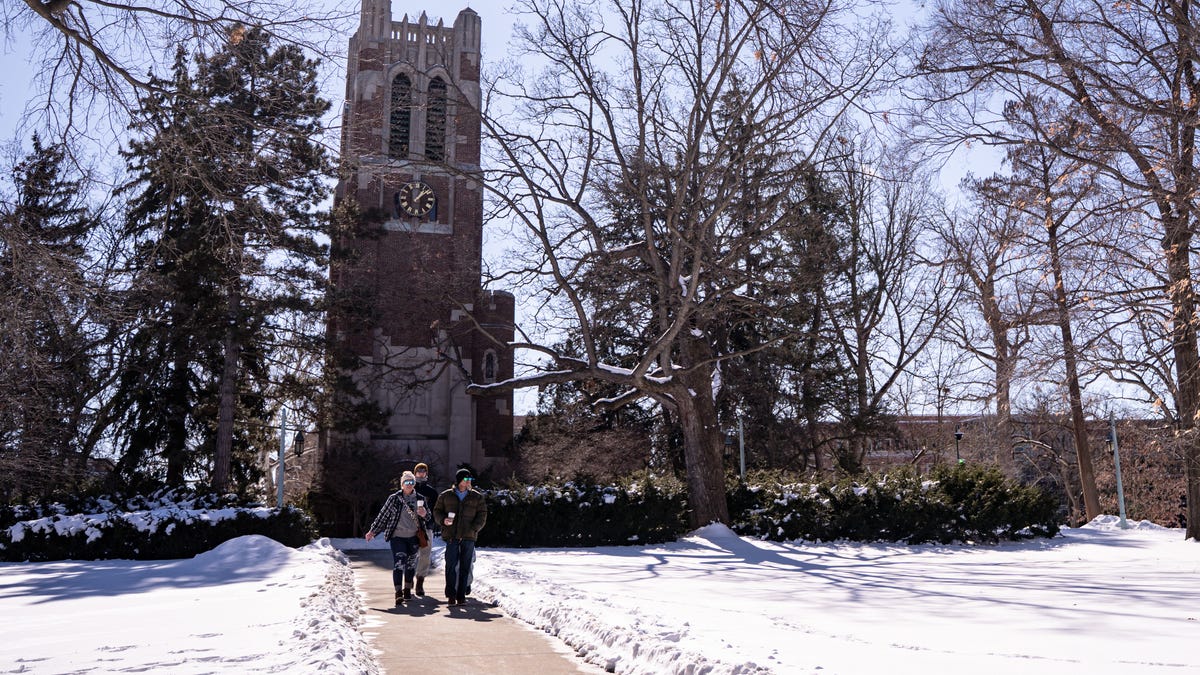Do college graduates have regrets about their chosen majors?
With the rising cost of college, Americans currently owe nearly $1.8 trillion in student loan debt. What majors are worth the money?
- The U.S. Department of Education will restart involuntary student loan collections on May 5.
- Borrowers in default for 270 days or more will face collections from paychecks, tax refunds, and Social Security benefits.
- Michigan has 1.3 million residents with student loan debt, averaging $37,053 per borrower.
- Borrowers have options to avoid involuntary collections, including repayment plans, loan rehabilitation, and consolidation.
The federal government will resume involuntary collections for borrowers in default on May 5, Education Secretary Linda McMahon said, which could impact many of the Michigan residents who owe money.
In two weeks, loan holders will start the process of garnishing money from borrowers’ paychecks if they have missed their payments for 270 days or more. More than 1.3 million people in Michigan have student loan debt, but the number considered in default isn’t clear.
The government said it also will start moving to collect from other federal payments, including tax refunds and Social Security Benefits.
More than 40 million Americans still owe payments on their federal student loans.
Collections for defaulted borrowers — of which there are more than 5 million — have been paused since March 2020. Under former President Joe Biden, monthly student loan bills resumed in the fall of 2023 after a years-long break, USA TODAY reported.
All borrowers in default will be notified of their status by email over the next two weeks, according to reporting from USA Today, borrowers can either pay their bills, enroll in an income-driven repayment plan, or sign up for loan rehabilitation or consolidation.
More than 1 million in Michigan have some form of student debt
According to national study done by Smartasset, 13.9% of Michigan’s population has some form of student loan debt — meaning 1.3 million Michiganders had some form of student debt, as of September 2024.
According to the Federal Student Aid website, Michigan residents owe about $51.6 billion in loans. The site says 1.394 million Michigan residents owe money.
The average outstanding balance for student loans in the Great Lakes state is $37,053, SmartAsset said, making Michigan the 19th highest state in the U.S., based on average outstanding principal and interest for student loans, according to the online provider of financial information and advice.
“While student loans may help a household increase its lifetime earnings, the principal and interest on these loans may stick around for decades — in many cases, those who still have student loan debt into their 60s still have more than $40,000 to pay off,” SmartAsset said.
What are student loans?
A student loan is money students borrow from the federal government, banks, financial institutions or other organizations for college, trade school or university education. The loans are connected to a student’s financial aid package.
There are four different types of student loans:
- Direct Subsidized Loans: Eligible undergraduate students with demonstrated financial need.
- Direct Unsubsidized Loan: Eligible undergraduate, graduate, and professional students.
- Direct PLUS Loans: Parents borrowing money for their dependent undergraduate students
- Direct Consolidation Loans: Anyone with eligible federal student loans who wants to combine any number of those loans into a single loan.
Tips to paying off student loan debt
Here are the top tips for paying off your student loans, according to the Federal Student Aid website:
- Review your student loan balance on your Dashboard.
- Choose a repayment plan based on your income. Loan Simulator can help you decide which plan is right for you.
- Visit your loan servicer’s website if you need help. Loan servicers are an important resource.
- Pay your student loans online through your loan servicer’s website. Tip: Set up auto pay to ensure on-time payments.
- Review the various loan forgiveness options.
- Email or chat with your loan servicer. Your loan servicer can help you with payments, repayment plans, and loan forgiveness programs.
What is garnishment?
Garnishment is when money is legally withheld from your paycheck and sent to another party. Garnishments are used for debts such as unpaid taxes, monetary fines, child support payments, and defaulted student loans, Investopedia said.
How can you prevent wage garnishment over a student loan?
Experian says you can avoid garnishment in various ways:
- One option is to enter into a voluntary student loan rehabilitation agreement with your federal student loan servicer.
- Combine loans into a direct loan consolidation, which comes with two options: Make three on-time monthly payments on the loan before consolidating. Your loan servicer will then calculate a reasonable payment amount; and forego the three payments and instead enroll in an income-driven repayment (IDR) plan to make the direct loan consolidation payments.
- You also have a right to dispute the wage garnishment if it would cause you “extreme financial hardship.” You can also file a dispute if you’ve been employed for less than a year after an involuntary unemployment period.
- Paying off your student loans in full all at once can be difficult, depending on your outstanding loan balance, but it’s a good option for a positive financial future.
- If you’re facing temporary financial hardship, you may be eligible for a deferment or forbearance.
Methodology SmartAsset used to determine debt
Total outstanding loan balances include principal and interest as of Sept. 30, 2024.
Loan and borrower data comes from the Federal Student Loan Portfolio from the Federal Student Aid office.
Population data for the states comes from the one-year American Community Survey (2023) from the U.S. Census Bureau.







